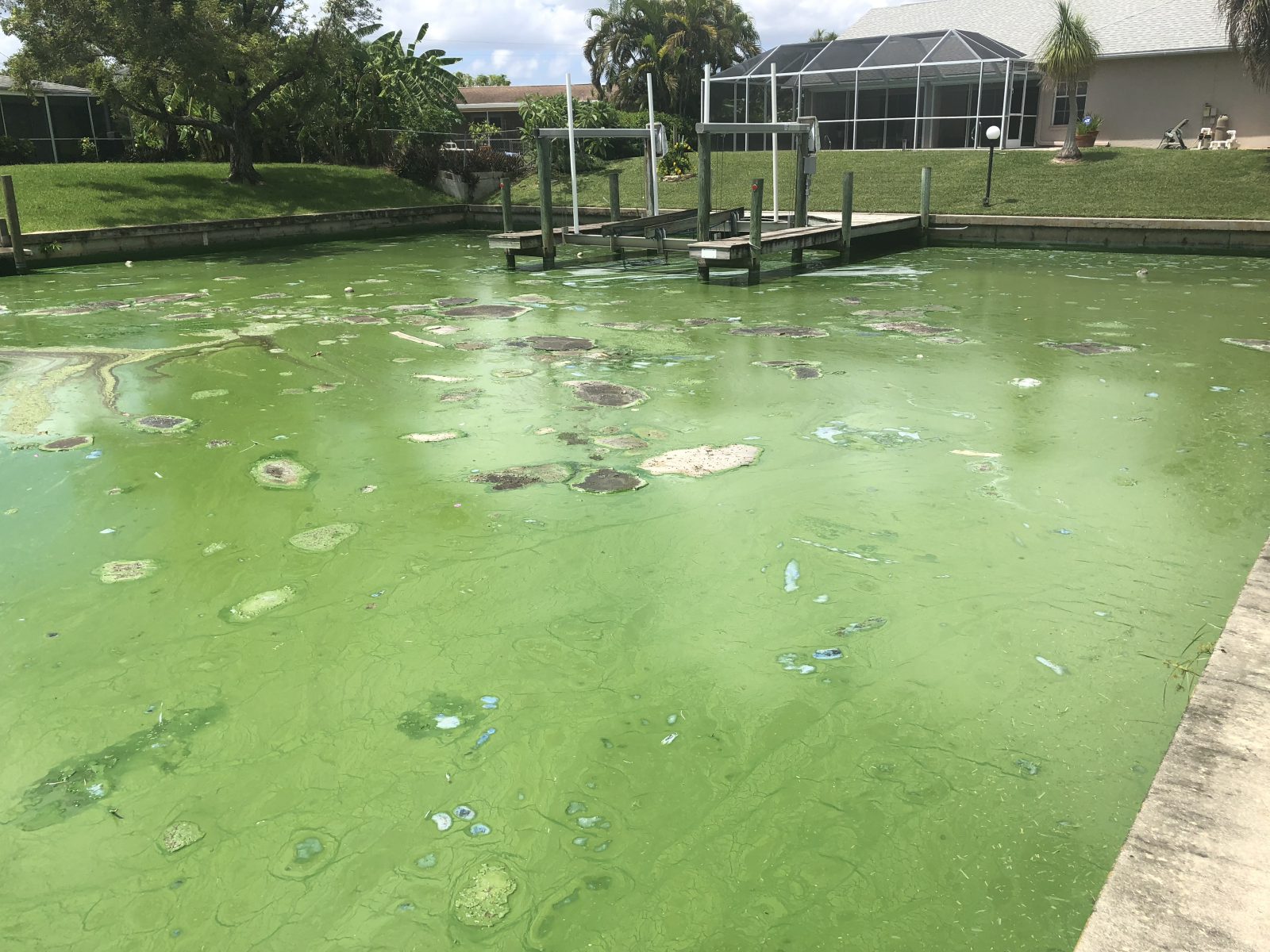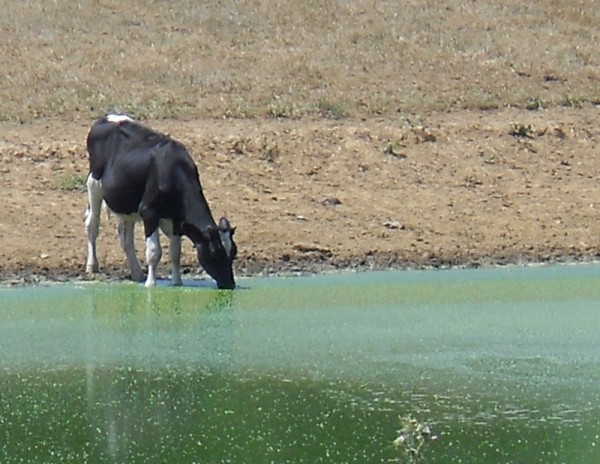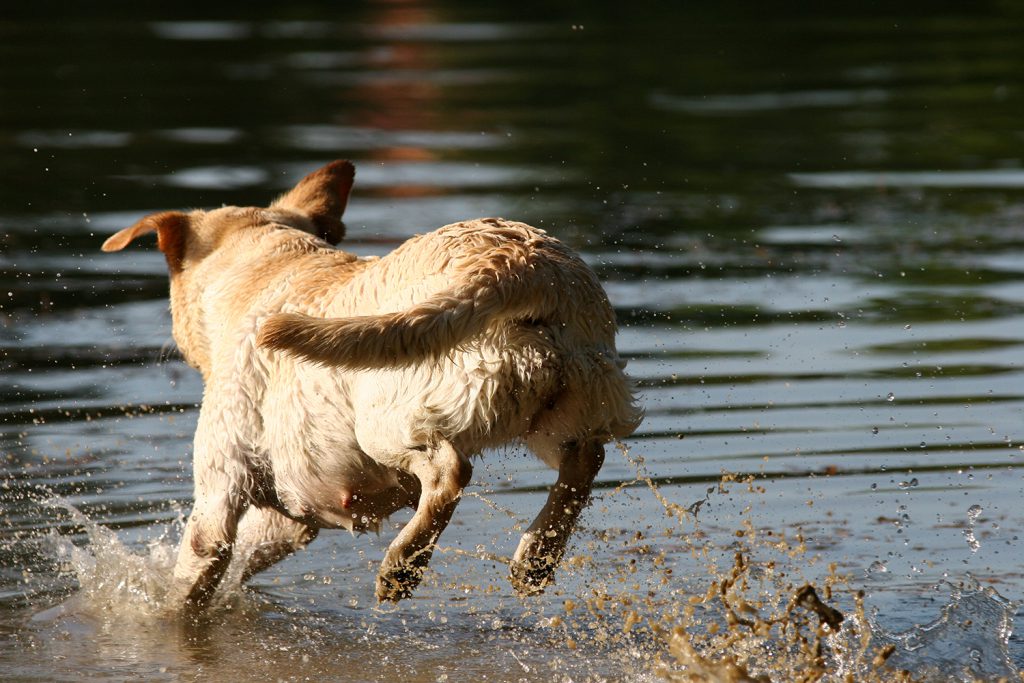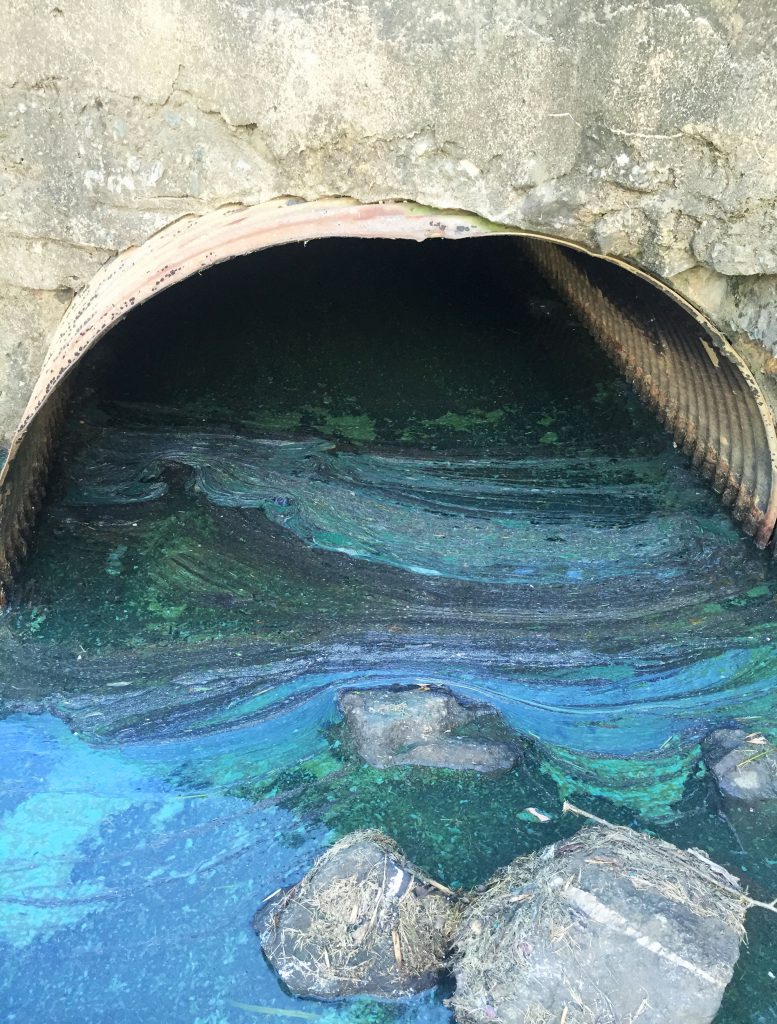
Toxic Algae Is A Threat to Family Pets and Farm Animals
If you are an animal lover, you know how fun it is to watch a dog race headfirst into a pond or lake to fetch a ball or stick. Other than dealing with the not-so-lovely wet dog smell afterwards, there’s no harm in a little fun, right? Not always. If that body of water has toxic algae, playing fetch could be harmful to your pet’s health.

Could toxic algae really kill my dog?
Yes, it can. I don’t want to be an alarmist, but I do want you to know the risk.
The most publicized cases often involve wild animals and livestock, not pets. For example, toxic algae in the water supply killed more than 100 elk in New Mexico last summer. However, there are more and more reports linking dog fatalities with toxic algae – including a recent case in Minnesota.
Veterinarians are taking notice. In recent years, there have been several articles published in vet pathology journals. Most veterinary manuals are being updated to include at least a chapter on algal toxicoses, as well. In particular, veterinarians are focusing on three types of algal toxins, which are most commonly produced by cyanobacterial or “blue-green algae”:
- Hepatotoxins affect liver function. These toxins are most commonly produced by cyanobacteria such as Microcystis.
- Neurotoxins affect the nervous system, including the brain. These toxins are produced by cyanobacteria such as Anabaena.
- Dermatoxins affect the skin. Exposure can result in mild irritation to serious lesions. These toxins are commonly produced by the mat-forming cyanobacteria, Lyngbya.

Signs your pet has been exposed to toxic algae:
Call your veterinarian right away if you spot these symptoms:
- Bloody stools may be a sign of exposure to liver toxins.
- Lethargy, trouble walking, stumbling, excessive salivation and drooling may be signs of exposure to neurotoxins.
- Excessive scratching and the presence of a rash or lesions may be signs of exposure to dermatoxins.
In addition, watch for excessive grooming or licking. Some evidence indicates that animals find the taste of algae appealing, so this could be a sign of exposure to slimy substances that may or may not be toxic.

Five steps to keep your animals safe:
To keep your pets and farm animals from ingesting toxic algae:
- Be aware – Know what toxic algae blooms are, why they are dangerous, and how to spot them.
- Keep animals away from algae – If necessary, water the animals from a trough until the pond clears and/or you can get help from a professional to treat the pond. Keep in mind some animals are actually attracted to the algal bloom because the taste and/or smell is palatable to them.
- Rinse off immediately – If your pet does jump into water with algae, rinse the animal off immediately.
- Treat the water – Contact a professional to assist with treating the toxic algae bloom. Most of the time it won’t get better on its own. A professional applicator can assist with not only treating the bloom but monitoring for toxin levels so that you know when the pond can safely be used for watering again.
- Help prevent algae blooms – Ensure that your yard care, fertilization, and water use patterns do not exacerbate the problem. For example, if you fertilize nearby pastures with chicken litter, the high phosphorus content in the run-off will feed algae blooms. There are alternatives that are better for your water and, therefore, your four-legged family members.
Becca Haynie specializes in research and regulatory affairs for SePRO Corporation. She is a wife, a mom, a nature lover, and a bona fide science geek. She has a Ph.D. in Environmental Toxicology from Clemson University.
Sources:
The Outdoor ChannelToxic Algae Cause of 100 Elk Deaths http://outdoorchannel.com/article.aspx?id=18609
Star-TribuneBlue-green algae, a killer for dogs, is beginning to show up in Minnesota http://www.startribune.com/sports/blogs/264755871.html
St Cloud TimesDog’s death prompts warning about algae blooms http://www.sctimes.com/story/news/local/2014/06/26/dogs-death-prompts-warning-algae-blooms/11406527/
Control Algae and Aquatic Weeds
Since 1998, SOLitude Lake Management has been committed to providing full service lake and pond management services that improve water quality, preserve natural resources, and reduce our environmental footprint. Services are available throughout the Eastern United States. Fisheries management consulting and aquatic products are available nationwide. Learn more about SOLitude Lake Management and purchase products at www.solitudelakemanagement.com.









